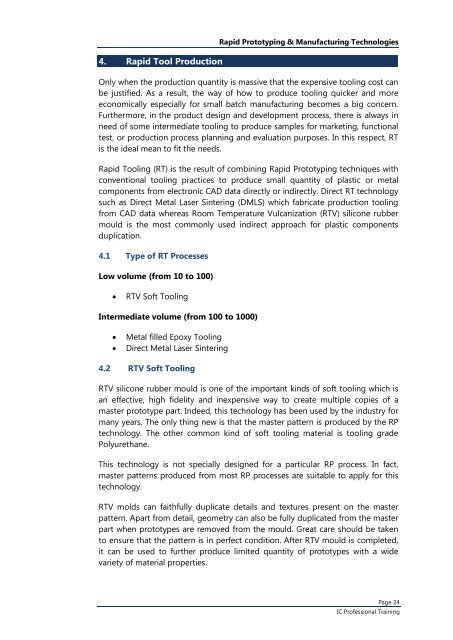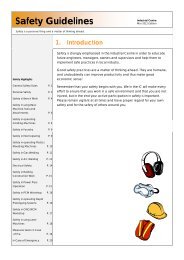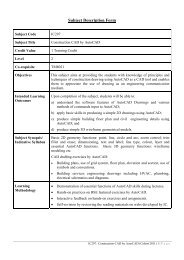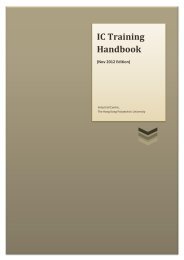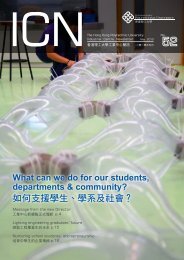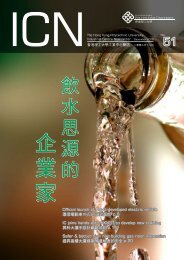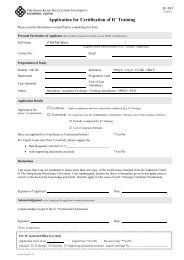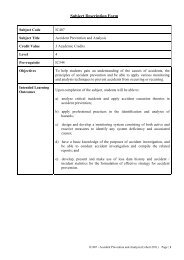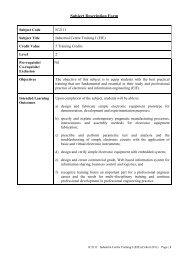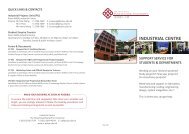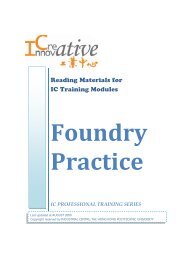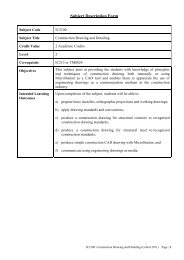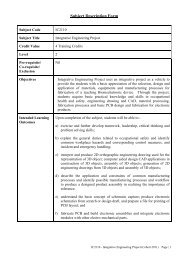Rapid Prototyping & Manufacturing Technologies - to submit your ...
Rapid Prototyping & Manufacturing Technologies - to submit your ...
Rapid Prototyping & Manufacturing Technologies - to submit your ...
You also want an ePaper? Increase the reach of your titles
YUMPU automatically turns print PDFs into web optimized ePapers that Google loves.
4. <strong>Rapid</strong> Tool Production<strong>Rapid</strong> <strong>Pro<strong>to</strong>typing</strong> & <strong>Manufacturing</strong> <strong>Technologies</strong>Only when the production quantity is massive that the expensive <strong>to</strong>oling cost canbe justified. As a result, the way of how <strong>to</strong> produce <strong>to</strong>oling quicker and moreeconomically especially for small batch manufacturing becomes a big concern.Furthermore, in the product design and development process, there is always inneed of some intermediate <strong>to</strong>oling <strong>to</strong> produce samples for marketing, functionaltest, or production process planning and evaluation purposes. In this respect, RTis the ideal mean <strong>to</strong> fit the needs.<strong>Rapid</strong> Tooling (RT) is the result of combining <strong>Rapid</strong> <strong>Pro<strong>to</strong>typing</strong> techniques withconventional <strong>to</strong>oling practices <strong>to</strong> produce small quantity of plastic or metalcomponents from electronic CAD data directly or indirectly. Direct RT technologysuch as Direct Metal Laser Sintering (DMLS) which fabricate production <strong>to</strong>olingfrom CAD data whereas Room Temperature Vulcanization (RTV) silicone rubbermould is the most commonly used indirect approach for plastic componentsduplication.4.1 Type of RT ProcessesLow volume (from 10 <strong>to</strong> 100)• RTV Soft ToolingIntermediate volume (from 100 <strong>to</strong> 1000)• Metal filled Epoxy Tooling• Direct Metal Laser Sintering4.2 RTV Soft ToolingRTV silicone rubber mould is one of the important kinds of soft <strong>to</strong>oling which isan effective, high fidelity and inexpensive way <strong>to</strong> create multiple copies of amaster pro<strong>to</strong>type part. Indeed, this technology has been used by the industry formany years. The only thing new is that the master pattern is produced by the RPtechnology. The other common kind of soft <strong>to</strong>oling material is <strong>to</strong>oling gradePolyurethane.This technology is not specially designed for a particular RP process. In fact,master patterns produced from most RP processes are suitable <strong>to</strong> apply for thistechnology.RTV molds can faithfully duplicate details and textures present on the masterpattern. Apart from detail, geometry can also be fully duplicated from the masterpart when pro<strong>to</strong>types are removed from the mould. Great care should be taken<strong>to</strong> ensure that the pattern is in perfect condition. After RTV mould is completed,it can be used <strong>to</strong> further produce limited quantity of pro<strong>to</strong>types with a widevariety of material properties.Page 24IC Professional Training


